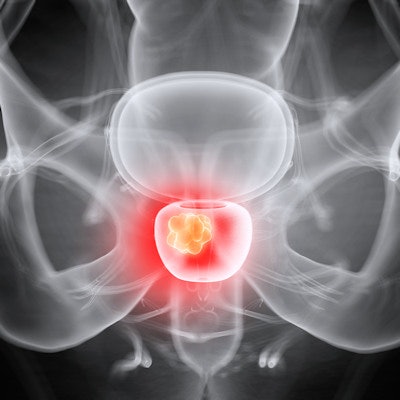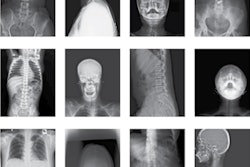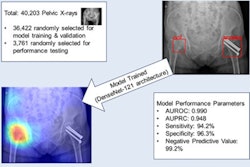
Researchers in Canada have for the first time validated the Fracture Risk Assessment Tool (FRAX) in men with prostate cancer, according to a study published February 20 in the Journal of Bone and Mineral Research.
A team led by Dr. Carrie Ye of the University of Alberta in Edmonton found that FRAX scores reliably predicted which patients were more likely to experience major osteoporotic fractures (MOF) or hip fracture over 10 years.
"These results are important because men with prostate cancer are at increased risk of bone loss and fracture," Ye and colleagues wrote. "Until now, there were no validated fracture risk assessment tools in this unique population."
Androgen deprivation via surgical castration or the use of androgen deprivation therapies (ADT) is a major cornerstone in treating patients with prostate cancer, yet the therapy is known to decrease bone mineral density and thus increase the risk of fractures.
FRAX was created to predict the 10-year fracture probability for major osteoporotic fractures and hip fractures in the general population. The tool considers multiple clinical risk factors, including age, sex, body mass index, smoking and alcohol history, personal and family history of fracture, glucocorticoid use, rheumatoid arthritis, secondary osteoporosis, and, when available, femoral neck bone mineral density (BMD) based on dual-energy x-ray absorptiometry (DEXA) bone scans.
While current guidelines recommend using FRAX to estimate individual fracture risk in men with prostate cancer, no studies to date have assessed its performance in these patients, the authors wrote.
In this study, the researchers identified adult men ages 40 or older in a Manitoba prostate cancer patient registry who had undergone a baseline DEXA exam between 1996 and 2018.
Patients had been on ADT for at least six months prior to or after the bone scans. For each patient, they used FRAX to calculate their 10-year probability of a major osteoporotic fracture or hip fracture.
Next, they used hospital records to identify reported major osteoporotic fractures, hip fractures, or any osteoporotic fracture in the patients from the date of the DEXA exam until March 31, 2018.
The study population included 684 men with prostate cancer with a mean age of 74.6, 19.4% of whom had a fracture prior to baseline DEXA. Over a mean follow-up of 5.5 years, 310 (45.3%) of the men had died and 70 (10.2%) suffered any fracture, including 52 (7.6%) with major osteoporotic fractures and 20 (2.9%) with hip fractures.
According to an analysis, the observed 10-year probability (8.4%) in the subjects showed good agreement with the FRAX-predicted 10-year major osteoporotic fracture probability, either without BMD (9.12%) or with BMD (8.66%) included in the calculation.
Similarly, the observed 10-year hip fracture probability (3.04%) showed good agreement with FRAX predicted 10-year hip fracture probability without BMD (3.27%) and with BMD (3.04%) included in the calculation, the authors found.
"This is the first study to validate the use of FRAX in men with prostate cancer," the authors wrote.
Ultimately, fractures in men with prostate cancer are associated with increased mortality and this study suggests FRAX may be applied in these patients to improve patient outcomes, the authors suggested.
"Given there are effective treatments to prevent bone loss and fracture in men with prostate cancer, it is imperative that men at high risk of fracture are identified and treated," Ye and colleagues concluded.




















